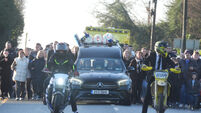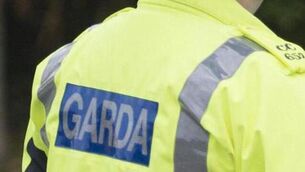Forgotten Irish war dead honoured by queen’s visit
Like the men whose lives it commemorates, the Irish National War Memorial Garden in Islandbridge was relatively unknown to the greater public before the visit of Queen Elizabeth on the second day of her historic State visit to Ireland.
However, all that changed utterly yesterday with the queen’s decision to include a tour of the beautiful, sedate garden on her itinerary in order to pay tribute to those who had died while fighting for Crown forces between 1914 and 1918.
As such, it also offered a perfect counterbalance to her visit the previous day to the Garden of Remembrance in Parnell Square to honour those who died fighting for Irish freedom and, by extension, against Britain.
Those twin ceremonies — gestures of a magnitude inconceivable until recently — paid due honour and recognition to Irishmen who took up arms on different sides a century ago, most of whom conscientiously believed they were advancing the cause of Irish independence.
As such, the two events seem certain to remain one of the abiding memories of these ground-breaking days.
Tucked away between the River Liffey and the Chapelizod by-pass out of view of most by-passers, the little known landmark is reminiscent of the fields of Flanders and other parts of northern France which commemorate the fallen of World War I.
On her arrival, the queen walked up a green carpet before laying a red, poppy wreath in another carefully-choreographed ceremony that honoured both traditions as a Garda helicopter and fixed-wing aircraft patrolled the skies overhead.
But as much as the British monarch’s presence was ground-breaking, it was the make-up of the invited guests that was truly historic.
Some 500 people, including many veterans from Irish, British and UN service, as well as representatives of the unionist and republican traditions from Northern Ireland, and mayors from the Belgian towns near the Irish war memorial in Messines, came to Islandbridge yesterday for another event rich in symbolism.
Among the more contentious names on the guest list were five representatives of the Ulster Defence Association, including some former loyalist paramilitary prisoners. However, it was a day for focusing on the future while still paying tribute to past fallen heroes as UDA leader, Jackie McDonald, acknowledged.
The Belfast loyalist also smiled in recognition at the irony that the first time he ever met the woman he described as “my queen” was in Dublin. “But it has been a privilege and an honour,” he added quickly.
Cardinal Seán Brady said he was delighted to see so many people from Northern Ireland gathered for the “basic and noble” instinct of commemorating people who gave their lives for freedom.
“It is one important step on the road to further reconciliation. There are many others still to be taken and hopefully this will give us the impetus, energy and hope to continue on that road,” said the cardinal.
A group of elderly members of the Orange Order, proudly displaying their traditional sashes, gathered with the exuberance of schoolboys to pose for photographs around the park’s central War Stone with its inscription “Their Name Liveth For Evermore.”
Alongside the grandmaster of the Orange Order’s sister organisation, the Royal Black Institution, Millar Farr, smiled contentedly as he looked on what would have been an incongruous sight until a few years ago. “Today should probably have happened before now but it is still very appropriate,” he said.
Yet some traditions die hard as the Northern Ireland First Minister Peter Robinson couldn’t pass up the opportunity to criticise Sinn Féin’s absence, while a senior Orange Order member bemoaned the presence of the UDA.
Wheelchair-bound RAF veteran, Joachim Nolan, 85, from Drumcondra, expressed “delight” at meeting the royal visitors.
Billy Murphy, 71, from Mayfield in Cork — an ex-Royal Marine served who served in Aden and Borneo — beamed at being witness to such a historic event and getting to meet the Duke of Edinburgh whom he had met in Buckingham Palace in 1964.
“Unfortunately, the history of Irishmen who served in the British army was never taught in schools,” observed Billy on past failing to understand him and his compatriots.
In a similar vein, Danny Tiernan From Boyle, Co Roscommon, travelled to Islandbridge to honour his late grandfather, William Tiernan who fought in both the Boer War and World War I with the Connacht Rangers.
“He came back and lived but he felt he could never commemorate those who died alongside him because of the way they were airbrushed out of Irish history,” recalled Danny.
He described the location as “very special.” “For years it was the only place that wives and families could come to honour their dead,” said Danny fighting back tears.
But the real star of yesterday’s ceremony at Islandbridge was the location itself.
A fitting outcome of yesterday’s ground-breaking ceremony would be for the War Memorial Garden to enjoy a wider appreciation in future through a greater number of visitors anxious to learn more about the complex history of our nation.












